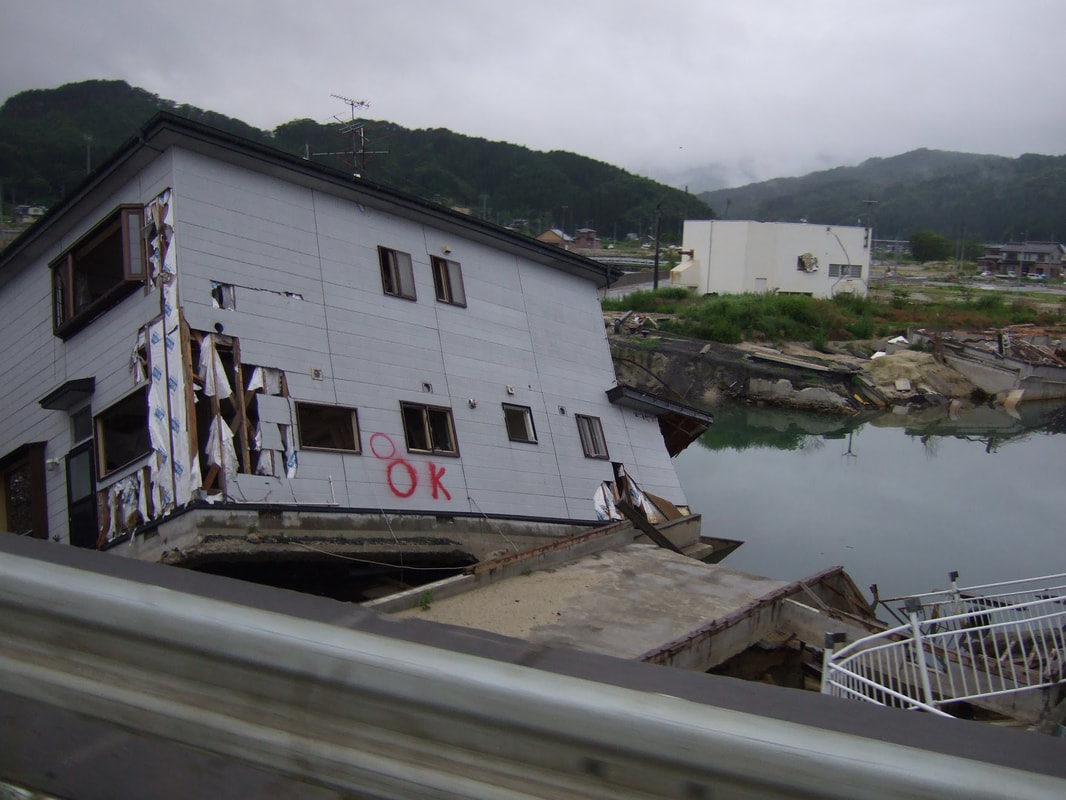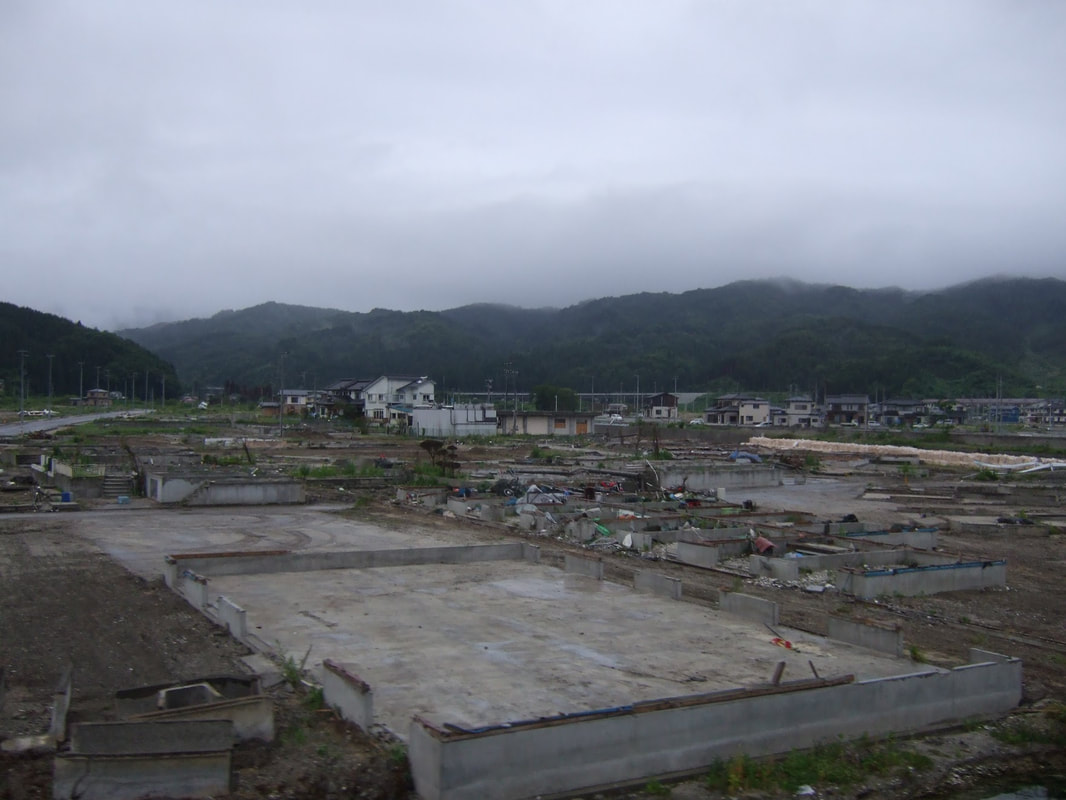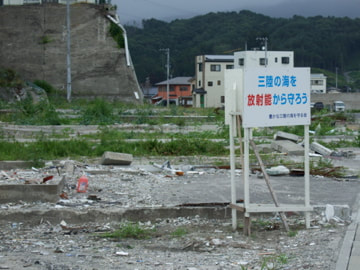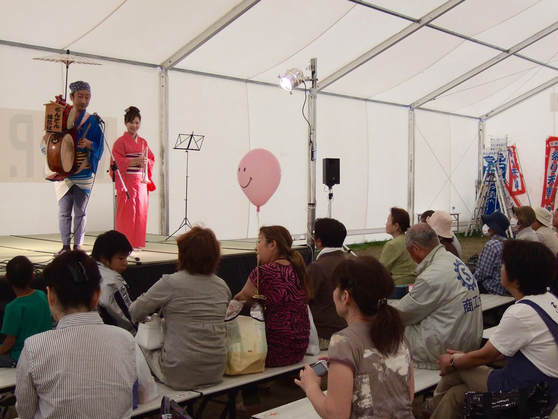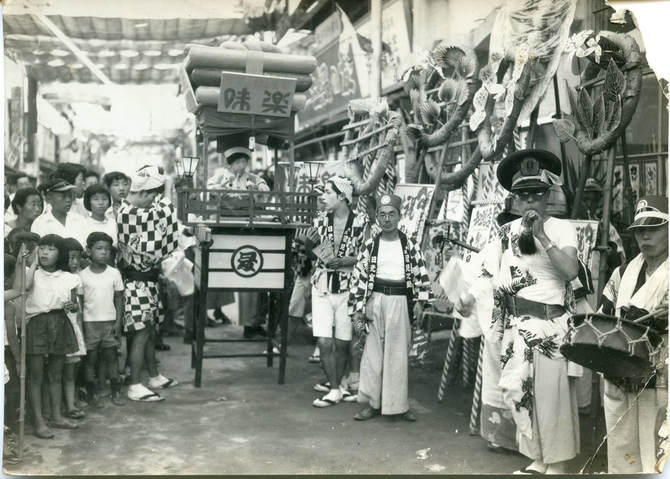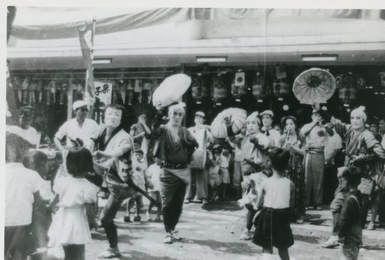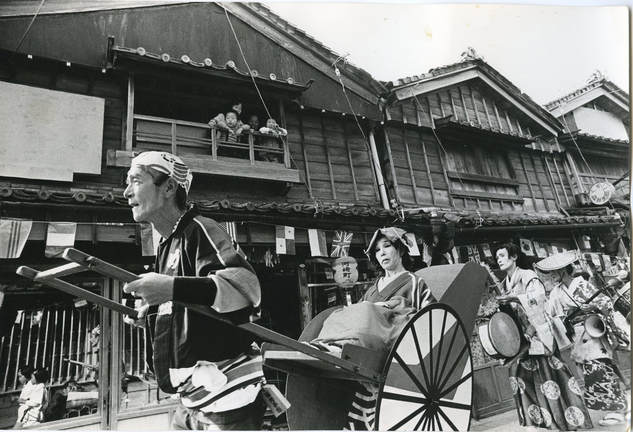Introduction
1) p. 1 – 3 Disaster-affected areas in Northeast Japan
Taken 4 months after the tsunami and earthquake 2011, on our way to visit and perform in Yamada-chō and Kuji. The sign in the image on the right reads "Protect the Sanriku Ocean from Radiation."
Below: Chindon Tsūshinsha performing in a tent for those who have survived the disaster.
2) p. 6 – 7 Sounds & Histories of Chindon-ya
Hayashi Kōjirō, the troupe leader of Chindon Tsūshinsha in Osaka, introduces himself and the chindon-drums.
HayashiIntro_Subtitled from marie on Vimeo.
3) p. 12 Chindon-ya, 1930-45
Photos of early chindon-ya, circa 1930-45 (courtesy of Hayashi Kōjirō)
|
|
|
|
"Chindon-ya Are Prospering" (News reel, 1955)
The weakening small businesses and deflation have led to an unexpected consequence: chindon-ya’s flourishing business. Small businesses relied on chindon-ya's publicity to survive. This troupe in Mizonokuchi, Kawasaki-city, had 40 members at this time.
|
1960's "A Day in the Life of Good Old Chindon-ya"
Another news reel on the same troupe, Kōseikan in Mizonokuchi. At this time the group has 20 members. The narrator uses the phrase "good old chindon-ya,” implying that the perception of chindon-ya is already starting to shift.
|
